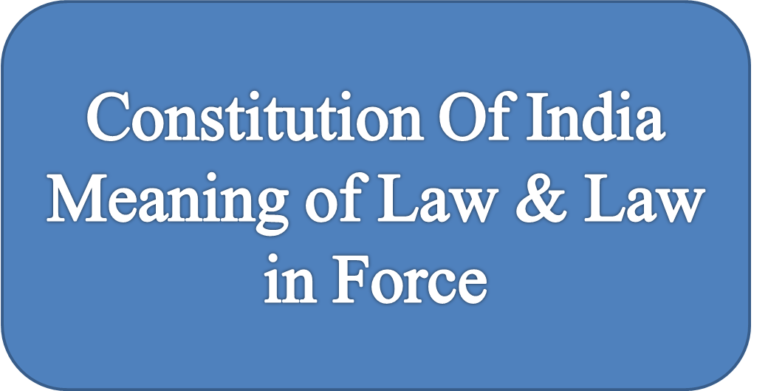Fundamental Rights (Constitution of India) Part – III Flow Chart of Fundamental Rights of the Constitution Fundamental Rights in Constitution of India Part 3 of the Indian Constitution, from Articles 14 to Article 35, contains the Fundamental Rights. All of the Fundamental Rights in the Indian Constitution have been borrowed from or influenced by the…
Category: Constitution of India
Evolution and Framing of Indian Constitutions
Evolution and Framing of Indian Constitutions M. N. Roy, a leader of India’s communist movement and a supporter of radical democracy, proposed the idea of an Indian Constituent Assembly for the first time in 1934. In 1935, the Indian National Congress (INC) officially demanded a Constituent Assembly to design the Indian Constitution. Evolution and Framing…
Constitution – Citizenship of India
Citizenship of India Citizenship of India (Article 5-11) Meaning of Citizenship The legal status of a person as a legitimate citizen of a state or as a member of a country is known as citizenship. The Indian Constitution’s Articles 5 to 11 deal with the concepts of citizenship. There are two types of people in…
Historical Background of Indian Constitution
Historical Background of Indian Constitution India was divided into two main entities before 1947. The British India which included of 11 provinces and the Princely states ruled by Indian princes under auxiliary alliance policy. In the form of the Indian Union the two entities merged together but many of the legacy systems of British India…
Preamble of the Indian Constitution
Preamble of the Indian Constitution with important case laws The Nature of Constitution of India ( Federal or Unitary) WE, THE PEOPLE OF INDIA, having solemnly resolved to constitute India into a SOVEREIGN SOCIALIST SECULAR DEMOCRATIC REPUBLIC and to secure to all its citizens: JUSTICE, social, economic and political; LIBERTY of thought, expression, belief, faith and worship; EQUALITY of status and…
Salient Features of Indian Constitution
Salient Features of Indian Constitution Constitution of India An Introduction with flow Chart & Schedules The Nature of Constitution ( Federal or Unitary) Salient Features of Indian Constitution The Lengthiest Constitution of the World The Indian Constitution is the world’s longest & written constitution. At the start, there were 395 articles, 22 parts, and 8…
The Nature of Indian Constitution ( Federal or Unitary)
Indian Constitution ( Federal or Unitary) Constitution of India An Introduction with flow Chart & Schedules The Nature of Indian Constitution ( Federal or Unitary) In general, the constitution is either federal or unitary. The powers of the government are concentrated in one government, namely the central government, in a unitary constitution. However, with a…

Constitution of India An Introduction
Constitution of India An Introduction Constitution of India Preamble of The Constitution of India WE, THE PEOPLE OF INDIA, having solemnly resolved to constitute India into a SOVEREIGN SOCIALIST SECULAR DEMOCRATIC REPUBLIC and to secure to all its citizens: JUSTICE, social, economic and political; LIBERTY of thought, expression, belief, faith and worship; EQUALITY of status and of opportunity; and to promote…

Constitution of India-Meaning of ‘Law’ and ‘Laws in force’
Constitution of India-Meaning of ‘Law’ and ‘Laws in force’ Meaning of ‘Law Jeshingbhai v. Emperor,[1] AIR 1950 Bom 363; D. Elayunni v. State, AIR 1961ker 52; Dwarka Nath v. State of Bihar, AIR 1959 SC 249; Vasudeo v. State of Mysore, Air 1966 Mys 92. In these cases “law” is defined as including an ordinance, order,…

Indian Constitution- Union Executive
Indian Constitution- Union Executive Constitution of India -Union Executive There are mainly two types of governments – Parliamentary Government Presidential Government Government of India There are two types of governments in India. The central government has three main organs-• Executive – President, Vice President and Council of Ministers• Legislature – Lok Sabha and Rajya Sabha•…
